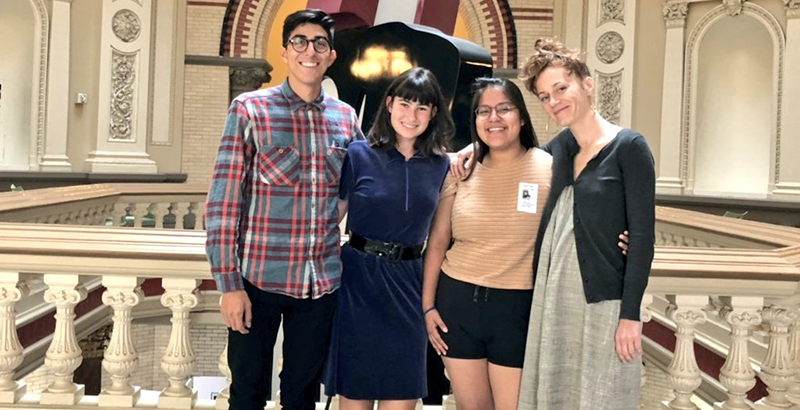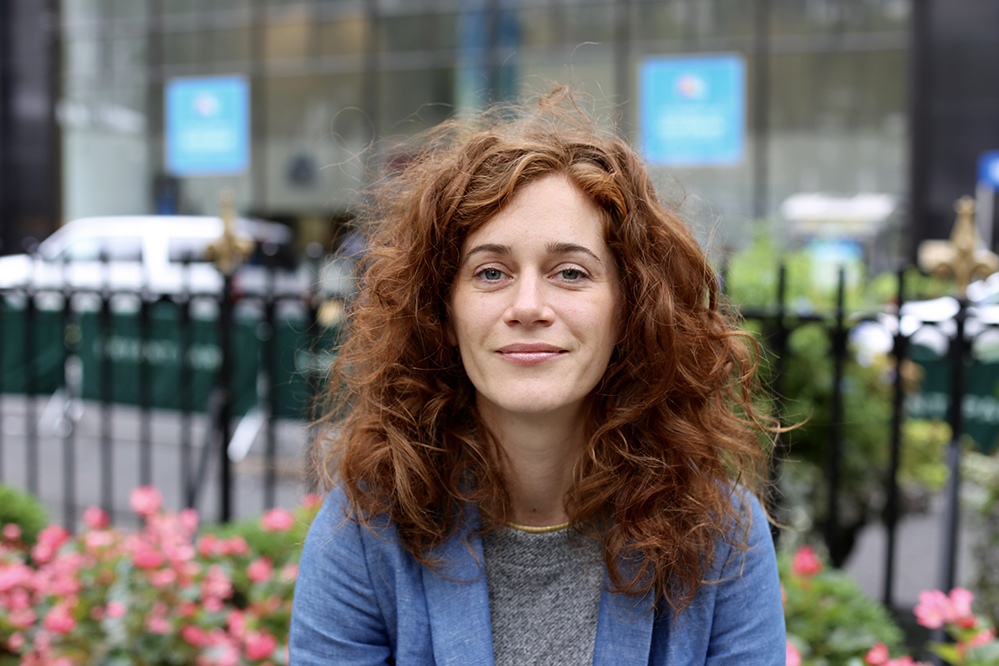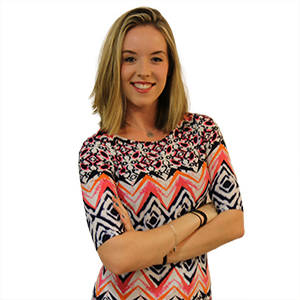In Response to a Surge in Youth Activism, NYC Schools Hires Its First Student Voice Manager Who Says She’ll Bring Kids Closer to the Decision Making

In early March, Dulce Marquez and a small group of New York City students found themselves in a unique position: Sitting in Tweed Courthouse, the Department of Education’s vast headquarters, conducting the final round of interviews for a new position tasked with elevating student voice.
One of the three finalists, Amallia Orman, immediately stood out, Marquez recalled.
“When she walked in, she didn’t even acknowledge any of the adults in the room,” said Marquez, a 2018 high school graduate and member of Teens Take Charge, a student activist group in the city. “Her attention [that day] was always with the students. The full attention.”
Orman is now the DOE’s first-ever “student voice manager” — a direct response to student activists’ calling for more youth inclusion in policy discussions and decisions on everything from integration to school discipline. A 38-year-old white woman, she is adamant that despite what her title may suggest, she is not the “voice” of the system’s predominantly black and Latino population. Rather, she says she considers herself a “facilitator” and “connector” who “makes more opportunities for youth to be at the center of the decision-making that impacts their educational experience.”
“I’m the person who’s [thinking about], ‘How can we get students to this table, or how can we get the people at this table to students?’” Orman said. “Youth are the most valuable and transformative stakeholders in education, and our most abundant resource.”
A Minneapolis native, Orman has lived in New York City for more than 20 years. She’s worked with students extensively, most recently as a student success advocate and instructor at CUNY’s Guttman Community College. She beat out about 350 applicants for the job, which formally started in April and comes with a $77,000-a-year base salary.
Orman’s day-to-day agenda in the country’s largest school district isn’t prescriptive — more “grassroots,” as she likes to say. She’s in schools regularly; last week, she visited a school that wants to start a student council. She’s sitting in on meetings with student groups and district officials, “taking notes … following up on the next steps, making sure youth are kept in the loop.” She’s getting youth feedback on a mental health awareness campaign. She also intends to help plan a few forum-like events for students this year who want to craft “a youth agenda for the city.”
“When students see their voices reflected in the policies that we put forward, it gives you not only the proof, but it gives you what we call agency — the presence to know that what you say is being listened to. And that’s incredibly powerful,” Schools Chancellor Richard Carranza said earlier this month about the position during a first-day-of-school visit to Newcomers High School in Queens.
Considering there are about 1.1 million district students, the position’s focus has mainly been on high schoolers so far, Orman said. There aren’t plans at this time to hire another student voice manager, a DOE spokesperson wrote in a Sept. 23 email.
Marquez and senior Tiffani Torres, also with Teens Take Charge, stressed that they want Orman to invest time connecting with underserved students who aren’t already activists — something Orman told The 74 she is prioritizing.
“There are so many students and families who don’t have the time to [get involved] and whose voices aren’t being represented,” Torres said. “Our hope is that Amallia takes her time, especially within these communities. ….We need her to be able to facilitate the conversations and the interactions that need to happen with these students.”

While Torres said she thinks Orman will “do an amazing job,” she wishes the student voice manager were a person of color. The district’s student population is about 40 percent Hispanic, 26 percent black, 16 percent Asian and 15 percent white.
“It does matter,” said Torres, 16. “We talk a lot about representation and how we need integration, not only on the student level but on the level of the administration.”
Marquez, now an incoming New York University student, agreed that it’s “an issue.” But the eight to 10 students who attended that final round of interviews “were able to connect more with Amallia” than the other two candidates, she said — even with one who was a person of color.
“What makes her capable is the fact that she doesn’t disengage with the fact that she’s white. She’s aware of it,” the 18-year-old said. “And more than that, you can call her out on it. You can still share your personal experiences. And she’s more than open to talking about it.”
Orman was quick to acknowledge her “whiteness” when asked about whether she felt capable of understanding minority students’ life experiences and their needs. “I’m comfortable helping facilitate and listening to critical conversations about race, class [and] gender,” she said, emphasizing that “listening is the most radical practice that I’ve done, not just as an educator but as a white educator.”
“This is something that I thought about a lot in the hiring process,” she added. “But I left it up to young people, and that’s it.”
Orman has connected with numerous students, student groups and organizations with youth programs, such as Integrate NYC, Girls for Gender Equity, The Door, The LGBTQ Center and Chancellor Carranza’s Student Advisory Council, a department spokesperson said. But her appointment wasn’t publicly announced — DOE hires typically are not — and many other students appear unaware that the position exists.
“We should have heard more about it,” said Sarah Kogan, a 16-year-old from Staten Island who — when asked at the Sept. 20 Climate March — didn’t know that the DOE had brought on a student voice manager. “That should’ve been made more clear to us because that’s directly affecting us.”
Another Climate March attendee, Zakariah Massoud, 14, also had no idea about the new role. But he liked the concept. “Yes [it’s important]. We are the people who need to decide the future, because we’re the ones having that future,” said Massoud, who’s from the South Bronx.
Right now, it’s hard to find Orman personally or through accounts dedicated to her new role on the platforms teenagers use most — Snapchat and Instagram — or on Twitter. Orman noted that “part of the work of this job is creating more student-facing communication.” Launching social media platforms and content “are priorities for this school year,” a department spokesperson said.
The best way for students to reach her currently is by emailing studentvoice@schools.nyc.gov.
“I don’t have to come through direct channels,” Orman added as she passed along her email. “I’m happy to meet with students and go to them.”
Get stories like these delivered straight to your inbox. Sign up for The 74 Newsletter

;)
